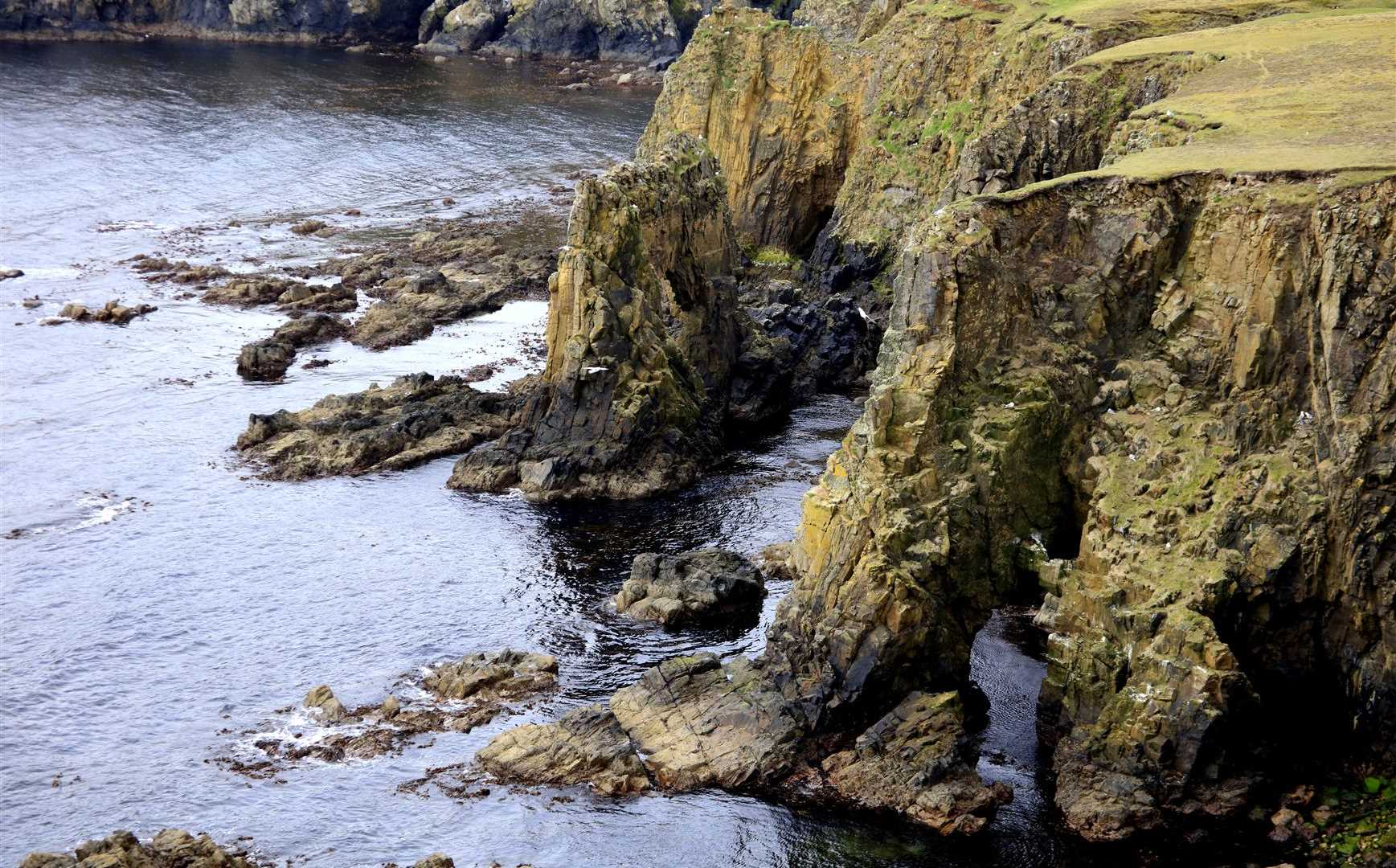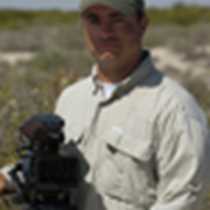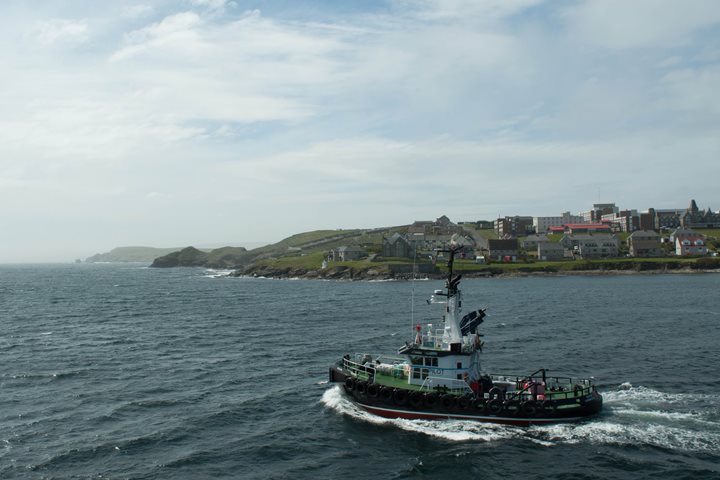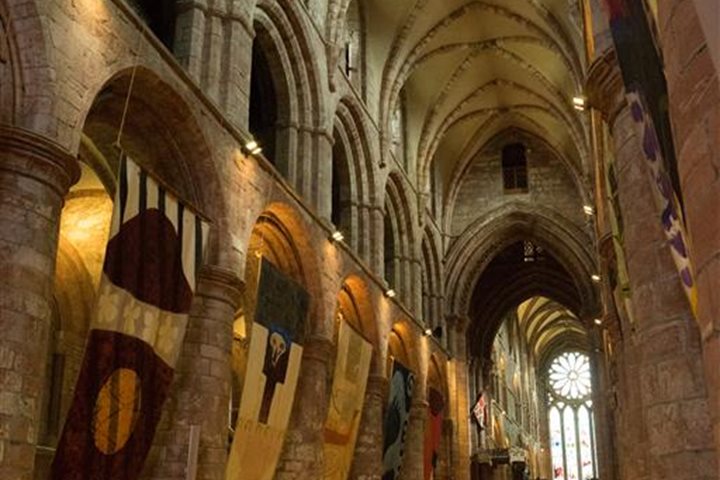We sailed overnight to the tiny and remote island of Fair Isle, set midway between the Shetland Islands and Orkney Islands. A little over three miles long and two miles wide, it has been occupied since the Bronze Age in 3000 B.C. The island currently has a close-knit population of roughly 70 people who live on small family farms, known locally as crofts. Renowned for its rugged coastal beauty, it is also famous for its distinctive and internationally acclaimed style of knitting. The unique Fair Isle knitting style was developed on the island centuries ago when the womenfolk found a ready demand for their knitwear with passengers and sailors on passing ships, which they bartered with for everyday and luxury items. The combinations of different colored wools make Fair Isle garments most attractive and there’s always a demand for sweaters.
When we arrived at the small quayside we received a very warm welcome by some of the locals. The more energetic within our group hiked over to the Fair Isle Community Hall, while friendly locals offered to drive those who didn’t fancy the walk. The hall is a vortex of life here on the island. A table had been set out for us with a mouth-watering selection of freshly baked cakes, biscuits and scones and the wonderful odors from the treats mixed wonderfully with the smell of tea and coffee. Tables festooned with locally made craft items were arranged around the room, with the money generated from sales helping to supplement the islanders income. Young and old alike stood at their stalls while a battery of folk served our refreshments. The sense of community here is palpable.
An erstwhile owner of the island, George Waterston, founded the Fair Isle Bird Observatory. Research on the migration of a variety of terrestrial birds and the large seabird colonies that are found here has been ongoing for over 50 years now, and a team of wardens conduct surveys and band the birds. The cliffs are home to guillemots, shags, gannets, fulmars, puffins, razorbills and kittiwakes and there is a sizeable population of grey seals, which we spotted as we made our way back to the ship in our Zodiacs.
The highlight of the afternoon was a visit to the Broch of Mousa, which is on the small island of Mousa in Shetland. The structure dates to 100 B.C. and is shaped somewhat like an inverted flower pot. It was a single protected family farmstead of a high-status family in Celtic society. Built two thousand years ago, it still does not fail to impress. It is possible to climb to the very top rim of the building via an intra-mural stairway and many of the guests took advantage of this. Of the 120 or so examples of brochs in the Shetland Islands, this is the finest. In its day the broch would have been a secure and comfortable dwelling.








